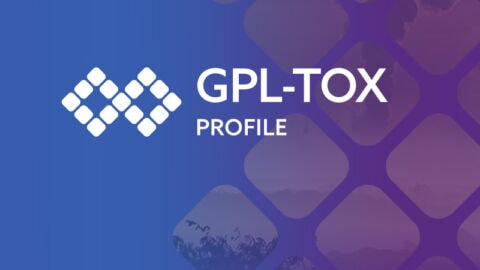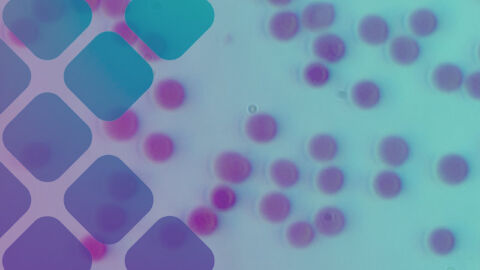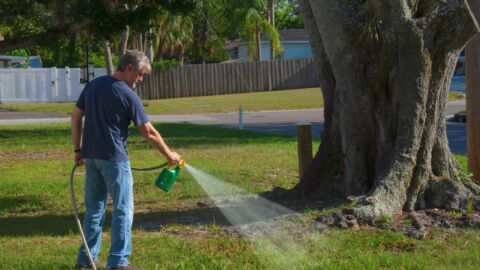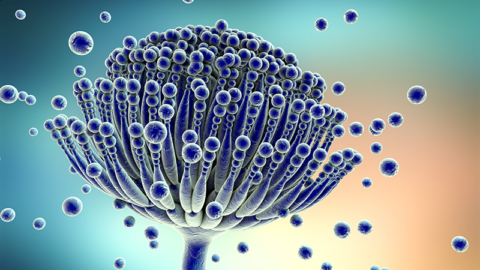Details
Why Test for Environmental Toxins?
Exposure to environmental toxicants has been linked to numerous health problems. Identifying exposure to unknown chemicals in daily products, foods, and the environment is critical for patients experiencing chronic inflammatory symptoms, resistance to weight loss, and signs of excessive total toxic load.
The GPL-TOX Profile is specifically designed to detect the presence of various toxic chemicals that can cause or contribute to chronic diseases. Toxicants can cause acute or chronic toxic overload when they are absorbed, inhaled, or ingested by the human body. These substances can be produced within the body or found in the environment as endocrine disruptors or cancer-causing chemicals.
By screening for environmental exposure to toxicants, the GPL-TOX Profile can help healthcare providers identify the underlying causes of toxicity and develop an effective plan for detoxification and healing. The profile also includes Tiglylglycine (TG), a marker for mitochondrial disorders that can result from mutations in mitochondrial DNA caused by toxic chemical exposure, infections, inflammation, and nutritional deficiencies.
Learn More About the GPL-TOX Profile: Explore FAQs
Analytes
The GPL-TOX Profile is a comprehensive test for screening exposure to 173 environmental toxicants through the analysis of 18 metabolites.
Below is a list of all the metabolites included in the test, along with a brief description of each and a description of their parent compound.
- Description: 2-Hydroxyisobutyric acid is formed endogenously as a product of branched-chain amino acid degradation and ketogenesis. This compound is also the major metabolite of gasoline octane enhancers such as MTBE and ETBE. Elevated levels indicate environmental exposure and very high values have been reported in genetic disorders.
- Parent: MTBE and ETBE are gasoline additives used to improve octane ratings. Exposure to these compounds is most likely due to groundwater contamination, and inhalation or skin exposure to gasoline or its vapors and exhaust fumes. MTBE has been demonstrated to cause hepatic, kidney, and central nervous system toxicity, peripheral neurotoxicity, and cancer in animals. Since the metabolites of these compounds are the same, ETBE may be similarly toxic.
- Description: MEP from diethyl phthalate is the most abundant phthalate metabolite found in urine. Diethyl phthalate is used in plastic products. Elevated values indicate exposure from various possible sources. Elimination of phthalates may be accelerated by sauna treatment.
- Parent: Phthalates, perhaps the most widespread group of toxic chemicals found in our environment. Phthalates are commonly found in aftershave lotions, aspirin, cosmetics, detergents, foods microwaved with plastic covers, oral pharmaceutical drugs, intravenous products prepared in plastic bags, hair sprays, insecticides, insect repellents, nail polish, nail polish remover, skincare products, adhesives, explosives, lacquer, janitorial products, perfumes, paper coatings, printing inks, safety glass, and varnishes. Phthalates have been implicated in reproductive damage, depressed leukocyte function, and cancer. Phthalates have also been found to impede blood coagulation, lower testosterone, and alter sexual development in children. Low levels of phthalates can feminize the male brain of the fetus, while high levels can hyper-masculinize the developing male brain.
- Description: These are metabolites of xylenes, solvents found in paints, lacquers, cleaning agents, pesticides, and gasoline. Exposure to xylenes generates methylhippuric acid isomers. Avoid/reduce exposure to these substances.
- Parent: Xylenes (dimethylbenzenes) are solvents found not only in common products such as paints, lacquers, pesticides, cleaning fluids, fuel and exhaust fumes, but also in perfumes and insect repellents. Xylenes are oxidized in the liver and bound to glycine before eliminated in urine. High xylene levels may be due to the use of certain perfumes and insect repellents. High exposures to xylene create an increase in oxidative stress, causing symptoms such as nausea, vomiting, dizziness, central nervous system depression, and death. Occupational exposure is often found in pathology laboratories where xylene is used for tissue processing.
- Description: Exposure to environmental styrene may slightly increase phenylglyoxylic and mandelic acid. Reduce exposure by eliminating the use of plastic and styrofoam containers for cooking, reheating, eating or drinking. Elimination of styrene can be accelerated by supplementing with glutathione and N-acetyl cysteine (NAC).
- Parent: Styrene/Ethylbenzene is used in the manufacturing of plastics, in building materials, and is found in car exhaust fumes. Polystyrene and its copolymers are widely used as food packaging materials. The ability of styrene monomer to leach from polystyrene packaging to food has been reported. Occupational exposure due to inhalation of large amounts of styrene adversely impacts the central nervous system, causes concentration problems, muscle weakness, tiredness, and nausea, and irritates the mucous membranes of the eyes, nose, and throat.
- Description: NAP is a metabolite of benzene. Benzene is a solvent that is widespread in the environment. It is found in cigarette smoke and gasoline, and is a byproduct of all types of combustion, including motor vehicle exhaust. Treatment consists of removing sources of exposure.
- Parent: Benzene is an organic solvent that is widespread in the environment. Benzene is a by-product of all sources of combustion, including cigarette smoke, and is released by outgassing from synthetic materials, and is a pollutant released by numerous industrial processes. Benzene is an extremely toxic chemical that is mutagenic and carcinogenic. High exposures to benzene cause symptoms of nausea, vomiting, dizziness, lack of coordination, central nervous system depression, and death. It can also cause hematological abnormalities.
- Description: NACE is a metabolite of acrylonitrile, which is used in the production of acrylic fibers, resins, and rubber. Acrylonitrile is metabolized by the cytochrome P450s and then conjugated to glutathione. Supplementation with glutathione should assist in the detoxification of acrylonitrile.
- Parent: Acrylonitrile is a colorless liquid with a pungent odor. It is used in the production of acrylic fibers, resins, and rubber. Use of any of these products could lead to exposure to acrylonitrile. Smoking tobacco and cigarettes is another potential exposure. Exposure to acrylonitrile can lead to headaches, nausea, dizziness, fatigue, and chest pains. The European Union has classified acrylonitrile as a carcinogen.
- Description: Perchlorate is used in the production of rocket fuel, missiles, fireworks, flares, explosives, fertilizers, and bleach. Studies show that perchlorate is often found to contaminate water supplies and food sources. It can disrupt the thyroid’s ability to produce hormones. The EPA has also labeled perchlorate a likely human carcinogen. Patients that are high in perchlorate can use a reverse osmosis water treatment system to remove perchlorate.
- Parent: Perchlorate is a chemical is used in the production of rocket fuel, missiles, fireworks, flares, explosives, fertilizers, and bleach. Studies show that perchlorate is often found in water supplies. Many food sources are also contaminated with perchlorate. Perchlorate can disrupt the thyroid’s ability to produce hormones. The EPA has also labeled perchlorate a likely human carcinogen. Patients that are high in perchlorate can use a reverse osmosis water treatment system to remove the chemical from their water supply.
- Description: This is a metabolite of the organophosphate flame retardant triphenyl phosphate (TPHP), which is used in plastics, electronic equipment, nail polish, and resins. TPHP can cause endocrine disruption. Studies have also linked TPHP to reproductive and developmental problems.
- Parent: Diphenyl Phosphate is a metabolite of the organophosphate flame retardant triphenyl phosphate (TPHP), which is used in plastics, electronic equipment, nail polish, and resins. TPHP can cause endocrine disruption. Studies have also linked TPHP to reproductive and developmental problems.
- Description: HEMA is a metabolite of ethylene oxide, which is used in the production of agrochemicals, detergents, pharmaceuticals, and personal care products. Chronic exposure to ethylene oxide has been determined to be mutagenic to humans. HEMA is also a metabolite of vinyl chloride and halopropane, which are used in many commercial chemical processes such as foam glueing, dry cleaning, and in the production of solvents. Supplementation with glutathione should assist in the detoxification process of these chemicals.
- Parents: Ethylene oxide, Vinyl chloride, Halopropane
- Ethylene oxide is used in many different industries including agrochemicals detergents, pharmaceuticals, and personal care products. Ethylene oxide is also used as a sterilizing agent on rubber, plastics, and electronics. Chronic exposure to ethylene oxide has been determined to be mutagenic to humans. Multiple agencies have reported it as a carcinogen. Studies of people exposed to ethylene oxide show an increased incidence of breast cancer and leukemia. Caution is needed with ethylene oxide because it is odorless at toxic levels.
- Vinyl chloride is an intermediate in the synthesis of several commercial chemicals, including polyvinyl chloride (PVC). Exposure to vinyl chloride may cause central nervous system depression, nausea, headache, dizziness, liver damage, degenerative bone changes, thrombocytopenia, enlargement of the spleen, and death.
- Description: NAPR is a metabolite of 1-bromopropane. Chronic exposure can lead to decreased cognitive function and impairment of the central nervous system. Acute exposure can lead to headaches.
- Parent: 1-Bromopropane is an organic solvent used for metal cleaning, foam gluing, and dry cleaning. Studies have shown that 1-BP is a neurotoxin as well as a reproductive toxin. Research indicates that exposure to 1-BP can cause sensory and motor deficits. Chronic exposure can lead to decreased cognitive function and impairment of the central nervous system. Acute exposure can lead to headaches.
- Description: NAHP is a metabolite of propylene oxide which is used in the production of plastics and as a fumigant. It is also used in the preparation of lubricants, surfactants, and oil demulsifiers and as a food additive, an herbicide, a microbicide, an insecticide, a fungicide, and a miticide. Propylene oxide is a probable human carcinogen.
- Parent: Propylene oxide is a chemical is used in the production of plastics and is used as a fumigant. Propylene oxide is used to make polyester resins for textile and construction industries. It is also used in the preparation of lubricants, surfactants, and oil demulsifiers. It has also been used as a food additive, an herbicide, a microbicide, an insecticide, a fungicide, and a miticide. Propylene oxide is a probable human carcinogen.
- Description: NAE is a metabolite of acrylamide, which is detoxified through a two-step process. First acrylamide is metabolized by the cytochrome P450s. Second it is conjugated to glutathione in order to make it more water soluble. Acrylamide is used in many industrial processes such as plastics, food packaging, cosmetics, nail polish, dyes, and treatment of drinking water. High levels of acrylamide can elevate a patient’s risk of cancer and cause neurological damage. Supplementation with glutathione can assist in the elimination of this compound.
- Parent: Acrylamide can polymerize to form polyacrylamide. Polyacrylamide is used in many industrial processes such as plastics, food packaging, cosmetics, nail polish, dyes, and treatment of drinking water. Food and cigarette smoke are also two major sources of exposure. Acrylamide has been found in foods like potato chips, French fries, and many others such as asparagus, potatoes, legumes, nuts, seeds, beef, eggs, and fish. Asparagine, which is found in these foods can produce acrylamide when cooked at high temperatures in the presence of sugars. High levels of acrylamide can elevate a patient’s risk of cancer. In addition, acrylamide is known to cause neurological damage.
- Description: NADB is a metabolite of 1,3 butadiene, which is evident of exposure to synthetic rubber such as tires. 1,3 butadiene is a known carcinogen and has been linked to increased risk of cardiovascular disease. Individuals that come into contact with rubber, such as car tires, could absorb 1,3 butadiene through the skin.
- Parent: 1,3 butadiene is a chemical made from the processing of petroleum. It is often a colorless gas with a mild gasoline-like odor. Most of this chemical is used in the production of synthetic rubber. 1,3 Butadiene is a known carcinogen and has been linked to an increased risk of cardiovascular disease. Individuals that come into contact with rubber, such as car tires, could absorb 1,3 Butadiene through the skin. The increased use of old tires in the production of crumb rubber playgrounds and athletic fields is quite troubling because children and athletes may be exposed to toxic chemicals this way.
- Description: DMP and DEP are major metabolites of many organophosphate pesticides. Reduce exposure by eating organic foods and avoiding use of pesticides in your home or garden. Living near agricultural areas or golf courses and areas regularly sprayed with pesticides will increase exposure. Elimination of organophosphates can be accelerated by sauna treatment.
- Parent: Organophosphates are one of the most toxic groups of substances used throughout the world. They are often used as biochemical weapons and terrorist agents but are most commonly used in pesticide formulations. Organophospates are inhibitors of cholinesterase enzymes, leading to overstimulation of nerve cells, causing sweating, salivation, diarrhea, abnormal behavior, including aggression and depression. Children exposed to organophosphates have more than twice the risk of developing pervasive developmental disorder (PDD), an autism spectrum disorder. A study done in the San Francisco Bay area found that in California agricultural areas, children born to mothers living within 500 meters of fields where organochlorine pesticides were used were more than 6 times more likely to develop autism than children whose mothers did not live near such fields. ASD risk increased with the poundage of organochlorines applied and decreased with distance from field sites. Maternal organophosphate exposure has been associated with various adverse outcomes including having shorter pregnancies and children with impaired reflexes.
- Description: DMP and DEP are major metabolites of many organophosphate pesticides. Reduce exposure by eating organic foods and avoiding use of pesticides in your home or garden. Living near agricultural areas or golf courses and areas regularly sprayed with pesticides will increase exposure. Elimination of organophosphates can be accelerated by sauna treatment.
- Parent: Organophosphates are one of the most toxic groups of substances used throughout the world. They are often used as biochemical weapons and terrorist agents but are most commonly used in pesticide formulations. Organophospates are inhibitors of cholinesterase enzymes, leading to overstimulation of nerve cells, causing sweating, salivation, diarrhea, abnormal behavior, including aggression and depression. Children exposed to organophosphates have more than twice the risk of developing pervasive developmental disorder (PDD), an autism spectrum disorder. A study done in the San Francisco Bay area found that in California agricultural areas, children born to mothers living within 500 meters of fields where organochlorine pesticides were used were more than 6 times more likely to develop autism than children whose mothers did not live near such fields. ASD risk increased with the poundage of organochlorines applied and decreased with distance from field sites. Maternal organophosphate exposure has been associated with various adverse outcomes including having shorter pregnancies and children with impaired reflexes.
- Description: 2,4-D was an ingredient in Agent Orange, and is most commonly used in agriculture of genetically modified foods, and as a weed killer for lawns. Reduce exposure by eating organic foods and avoiding use of pesticides in your home or garden.
- Parent: 2,4-Dichlorophenoxyacetic Acid (2-,4-D) is a very common herbicide that was a part of Agent Orange, used by the United States during the Vietnam War to increase visibility for warplanes, by destroying plant undergrowth and crops. It is most commonly used in agriculture on genetically modified foods, and as a weed killer for lawns. Exposure to 2, 4-D via skin or oral ingestion is associated with neuritis, weakness, nausea, abdominal pain, headache, dizziness, peripheral neuropathy, stupor, seizures, brain damage, and impaired reflexes. 2, 4-D is a known endocrine disruptor and can block hormone distribution and cause glandular breakdown.
- Description: 3-HPMA is a metabolite of acrolein. Acrolein is commonly used as an herbicide to control weeds and algae in irrigation canals. Humans are exposed to acrolein via oral (fried foods, alcoholic beverages, and water), respiratory (cigarette smoke and automobile exhaust), and dermal routes. On the cellular level, acrolein exposure has diverse toxic effects, including DNA and protein adduction, oxidative stress, mitochondrial disruption, membrane damage, and immune dysfunction. N-acetylcysteine (NAC) or glutathione (GSH) supplementation is recommended as treatment.
- Parent: Acrolein is commonly used as an herbicide to control submersed and floating weeds and algae in irrigation canals. Humans are exposed to acrolein via oral (fried foods, alcoholic beverages, and water), respiratory (cigarette smoke and automobile exhaust), and dermal routes. In addition, there is also endogenous generation (metabolism and lipid peroxidation) of acrolein. Acrolein has been suggested to play a role in several disease states including spinal cord injury, multiple sclerosis, Alzheimer’s disease, cardiovascular disease, diabetes mellitus, and neuro-, hepato-, and nephrotoxicity. On the cellular level, acrolein exposure has diverse toxic effects, including DNA and protein adduction, oxidative stress, mitochondrial disruption, membrane damage, and immune dysfunction.
- Description: 3-Phenoxybenzoic acid is a metabolite of pyrethroid insecticides. Elimination can be accelerated by sauna treatment.
- Parents: Pyrethroids – Including Permethrin, Cypermethrin, Cyhalothrins, Fenpropathrin, Deltamethrin, Trihalomethrin are widely used as insecticides. Exposure during pregnancy doubles the likelihood of Autism. Pyrethrins may affect neurological development, disrupt hormones, induce cancer, and suppress the immune system.
- Description: TG is a marker for mitochondrial dysfunction. Mutations of mitochondria DNA may result from exposure to toxic chemicals, infections, inflammation, and nutritional deficiencies.
- Parent: Tiglylglycine (TG),one of the most specific markers for mitochondrial disorders resulting from mutations of mitochondrial DNA. These mutations can result from exposure to toxic chemicals, infections, inflammation, and nutritional deficiencies. Mitochondria are important in all cells in the body, but are especially important to organs that utilize large amounts of energy, such as the muscles, heart, and brain. The mitochondria also have several other important functions in the cell, including steroid synthesis, calcium regulation, free radical production, and the induction of apoptosis or programmed cell death, all of which are involved in the pathogenesis of numerous disorders. The marker used in the GPL-TOX profile indicates mitochondrial dysfunction by monitoring a metabolite that is elevated in mitochondrial deficiency of cofactors such as NAD+, flavin-containing coenzymes, and Coenzyme Q10. Disorders associated with mitochondrial dysfunction include Autism, Parkinson’s disease, and cancer.
Sample Reports
The GPLTOX test report is a useful resource for practitioners who want to gain valuable insights into their patients potential exposure to environmental pollutants.
The test report lists all metabolites along with their parent compound while organizing into clinically useful categories including:
- Industrial Toxicants
- Organophosphate Insecticide Metabolites
- Herbicides
- Pyrethroid Insecticides
- Markers for Mitochondria Function
Test Prep and Instructions
MosaicDX offers patient-friendly sample collection kits that simplify testing. Our kits include visual, step-by-step instructions for test preparation and sample collection, personalized shipping cards, and pediatric collection bags if needed. With MosaicDX, patients can easily collect samples for testing with confidence and accuracy.













